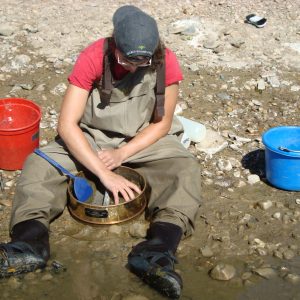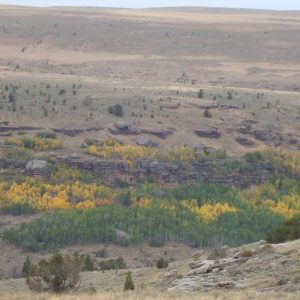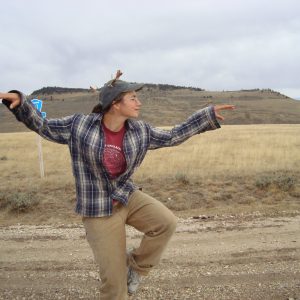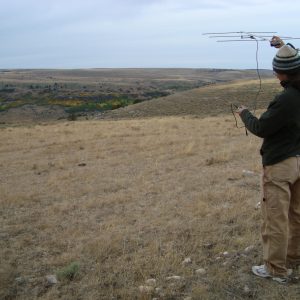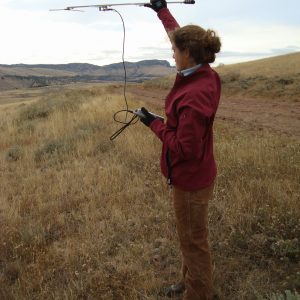Almost 4 months in. We recently spent a week working with a USGS hydrology team surveying the Tongue River (the river with our very favorite riparian zone! Acclaimed and adored location of the Mighty Welch Riparian Area Monitoring Program [MWRAMP]!). It was interesting to branch out a bit, both into new techniques and into another government agency. As the government’s main data-collecting agency, USGS is more science- and procedure-oriented and less management-focused than the BLM, and it was helpful to get another perspective as I’m beginning to think about what I might want to do next.
The BLM, USGS, and several other federal, state, and tribal agencies are working together in an aquatic task group that addresses the effects of the water produced by coalbed methane extraction on aquatic ecosystems. To that end, we were sampling for macroinvertebrates, collecting water quality data, and surveying some of the river’s physical characteristics.
After the USGS week, we headed up to the southern Bighorns for a week of sage grouse tracking with radio telemetry. The yellow autumn aspens were stunning, we learned a new skill, and we saw lots of grouse! It’s difficult to imagine a much better way to spend time; after long days of walking around in the mountains, we drove back down the rough road to a little game warden’s cabin overlooking a fork of the Powder River.
As usual, most other days have also been fairly dynamic:
A rancher wanted help loading hundreds of sheep into a huge semi truck. Meet in the corral at 7 and learn fast. “Wear your walking shoes.” (Translation: you will be stepped on by many bleating fluffballs).
Wolf spiders have eight eyes and look like old men. This is not something that I realized before, but check them out with a hand lens, they are AWESOME.
Which is a better method for grouse pellet counts, circle quadrats or transects? If circles, how large? I think that this is the only time Anya and I have ever had what our supervisor approvingly calls a “spirited discussion.”
On rare occasions and with a cursory look, a cow looks alarmingly like a black bear…
… Still very much enjoying my time in Buffalo and looking forward to what’s coming next.
Miriam Johnston
Buffalo, WY BLM


